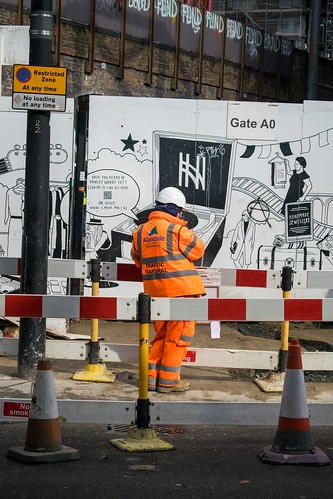No date’ are these for which no chronometric determinations according to samples of hominin material or securely linked faunal remains have already been reported within the literature. Some chronometric determinations that have been primarily based only on morphology or connected fauna have offered rise to broad age estimations; we omit the specifics of such determinations here. Some added sites with fragmentary remains, particularly isolated dental remains, will not be listed. The first 4 entries (KNMOL , OH , Daka and Buia) are older than the beginning in the SPDB web Middle Pleistocene but are incorporated since they are discussed in text.Internet site Olorgesailie (KNMOL) Olduvai Gorge (OH) Daka Buia Tighenif (Ternifine) Elandsfontein (Saldanha) Bodo Baringo (Kaphturin Formation) Sale NdutuSpecimens Frontal Partial calvaria Calvaria, femur Calvaria, postcranial fragments Three mandibles, skull ReACp53 biological activity fragment Partial calvaria and mandible frag Partial calvaria, left parietal (located roughly m from Bodo), distal humerus Mandible, ulna Partial calvaria and upper dentition Partial calvaria Partial femur Calvaria, material from at the least three folks Partial cranium Partial mandible Teeth, tibia Calvaria Remains of at least individuals Partial skeleton, remains of at least three people Two partial crania, partial skeleton 3 partial crania Partial calvaria Three calvaria, mandible, fragments of seven individuals Cranium Calvaria CalvariaGeological Location age (ka) Kenya Supply(s) Potts et al. We report here the widest range as reviewed by Mcbrearty and Brooks , according to the paleomagnetic sequence. DOI.eLifeBerger et al. eLife ;:e. DOI.eLife. ofShort reportGenomics and Evolutionary BiologySalJebel IrhoudSinga Buia Daka Herto Bodo Omo Kibish Ileret Eliye SpringsEquator Baringo Olorgesailie Berg Aukas Ndutu Olduvai Gorge Laetoli Eyasi Florisbad Kabwe Hoedjiespunt  Elandsfontein (Saldanha) Cave of Hearths Increasing StarFigure . African fossil sites from the Middle and earliest Late Pleistocene. Websites discussed in the text are highlighted in pink right here. Geological age estimations for every single fossil hominin assemblage are provided in Table , in conjunction with references. DOI.eLifefinds, crania have
Elandsfontein (Saldanha) Cave of Hearths Increasing StarFigure . African fossil sites from the Middle and earliest Late Pleistocene. Websites discussed in the text are highlighted in pink right here. Geological age estimations for every single fossil hominin assemblage are provided in Table , in conjunction with references. DOI.eLifefinds, crania have  already been viewed as essentially the most diagnostically significant as indicators from the presence of archaic humans with massive brain sizes within the Middle and Late Middle Pleistocene. Only 3 of your fossil crania take place inside , km from the place in the Rising Star cave technique. The cranium and mandible fragment from Elandsfontein, or Saldanha, South Africa derives from an openair deposit with many depositions of faunal remains, which, by comparison with East African vertebrate assemblages, come from about , to million years ago (Klein et al a). Nevertheless, the skull and mandible fragment are primarily surface finds. The Florisbad partial cranium from close to Bloemfontein, South Africa, comes from mineral springs which accumulated fossils from around ka to ka; a direct electron spin resonance (ESR) assessment on a human M yielded �n an age estimate of ka (Gru et al). This single tooth is assumed PubMed ID:https://www.ncbi.nlm.nih.gov/pubmed/10899433 to be connected together with the fossil hominin cranium. It can be roughly mm smaller in diameter than a sample of 4 H. naledi upper third molars, and lies within the size selection of each H. erectus and African contemporary human populations (Smith et al). While third molars differ substantially in humans and fossil Homo, this tooth will not resemble the morphology of known H. naledi maxillary third molars. The Kabwe, or Broken Hill, cranium from Za.No date’ are these for which no chronometric determinations determined by samples of hominin material or securely linked faunal remains have been reported in the literature. Some chronometric determinations that were based only on morphology or connected fauna have provided rise to broad age estimations; we omit the information of such determinations here. Some additional sites with fragmentary remains, specifically isolated dental remains, are not listed. The first four entries (KNMOL , OH , Daka and Buia) are older than the beginning of the Middle Pleistocene but are included simply because they are discussed in text.Web-site Olorgesailie (KNMOL) Olduvai Gorge (OH) Daka Buia Tighenif (Ternifine) Elandsfontein (Saldanha) Bodo Baringo (Kaphturin Formation) Sale NdutuSpecimens Frontal Partial calvaria Calvaria, femur Calvaria, postcranial fragments Three mandibles, skull fragment Partial calvaria and mandible frag Partial calvaria, left parietal (discovered roughly m from Bodo), distal humerus Mandible, ulna Partial calvaria and upper dentition Partial calvaria Partial femur Calvaria, material from at the least three folks Partial cranium Partial mandible Teeth, tibia Calvaria Remains of a minimum of folks Partial skeleton, remains of at least 3 individuals Two partial crania, partial skeleton Three partial crania Partial calvaria Three calvaria, mandible, fragments of seven people Cranium Calvaria CalvariaGeological Location age (ka) Kenya Supply(s) Potts et al. We report here the widest range as reviewed by Mcbrearty and Brooks , depending on the paleomagnetic sequence. DOI.eLifeBerger et al. eLife ;:e. DOI.eLife. ofShort reportGenomics and Evolutionary BiologySalJebel IrhoudSinga Buia Daka Herto Bodo Omo Kibish Ileret Eliye SpringsEquator Baringo Olorgesailie Berg Aukas Ndutu Olduvai Gorge Laetoli Eyasi Florisbad Kabwe Hoedjiespunt Elandsfontein (Saldanha) Cave of Hearths Increasing StarFigure . African fossil web-sites from the Middle and earliest Late Pleistocene. Web sites discussed within the text are highlighted in pink right here. Geological age estimations for each and every fossil hominin assemblage are given in Table , along with references. DOI.eLifefinds, crania happen to be viewed as probably the most diagnostically crucial as indicators with the presence of archaic humans with significant brain sizes inside the Middle and Late Middle Pleistocene. Only three from the fossil crania occur within , km in the location from the Rising Star cave program. The cranium and mandible fragment from Elandsfontein, or Saldanha, South Africa derives from an openair deposit with multiple depositions of faunal remains, which, by comparison with East African vertebrate assemblages, come from about , to million years ago (Klein et al a). However, the skull and mandible fragment are basically surface finds. The Florisbad partial cranium from near Bloemfontein, South Africa, comes from mineral springs which accumulated fossils from around ka to ka; a direct electron spin resonance (ESR) assessment on a human M yielded �n an age estimate of ka (Gru et al). This single tooth is assumed PubMed ID:https://www.ncbi.nlm.nih.gov/pubmed/10899433 to be connected with the fossil hominin cranium. It can be roughly mm smaller sized in diameter than a sample of four H. naledi upper third molars, and lies within the size selection of both H. erectus and African modern human populations (Smith et al). Though third molars differ substantially in humans and fossil Homo, this tooth doesn’t resemble the morphology of known H. naledi maxillary third molars. The Kabwe, or Broken Hill, cranium from Za.
already been viewed as essentially the most diagnostically significant as indicators from the presence of archaic humans with massive brain sizes within the Middle and Late Middle Pleistocene. Only 3 of your fossil crania take place inside , km from the place in the Rising Star cave technique. The cranium and mandible fragment from Elandsfontein, or Saldanha, South Africa derives from an openair deposit with many depositions of faunal remains, which, by comparison with East African vertebrate assemblages, come from about , to million years ago (Klein et al a). Nevertheless, the skull and mandible fragment are primarily surface finds. The Florisbad partial cranium from close to Bloemfontein, South Africa, comes from mineral springs which accumulated fossils from around ka to ka; a direct electron spin resonance (ESR) assessment on a human M yielded �n an age estimate of ka (Gru et al). This single tooth is assumed PubMed ID:https://www.ncbi.nlm.nih.gov/pubmed/10899433 to be connected together with the fossil hominin cranium. It can be roughly mm smaller in diameter than a sample of 4 H. naledi upper third molars, and lies within the size selection of each H. erectus and African contemporary human populations (Smith et al). While third molars differ substantially in humans and fossil Homo, this tooth will not resemble the morphology of known H. naledi maxillary third molars. The Kabwe, or Broken Hill, cranium from Za.No date’ are these for which no chronometric determinations determined by samples of hominin material or securely linked faunal remains have been reported in the literature. Some chronometric determinations that were based only on morphology or connected fauna have provided rise to broad age estimations; we omit the information of such determinations here. Some additional sites with fragmentary remains, specifically isolated dental remains, are not listed. The first four entries (KNMOL , OH , Daka and Buia) are older than the beginning of the Middle Pleistocene but are included simply because they are discussed in text.Web-site Olorgesailie (KNMOL) Olduvai Gorge (OH) Daka Buia Tighenif (Ternifine) Elandsfontein (Saldanha) Bodo Baringo (Kaphturin Formation) Sale NdutuSpecimens Frontal Partial calvaria Calvaria, femur Calvaria, postcranial fragments Three mandibles, skull fragment Partial calvaria and mandible frag Partial calvaria, left parietal (discovered roughly m from Bodo), distal humerus Mandible, ulna Partial calvaria and upper dentition Partial calvaria Partial femur Calvaria, material from at the least three folks Partial cranium Partial mandible Teeth, tibia Calvaria Remains of a minimum of folks Partial skeleton, remains of at least 3 individuals Two partial crania, partial skeleton Three partial crania Partial calvaria Three calvaria, mandible, fragments of seven people Cranium Calvaria CalvariaGeological Location age (ka) Kenya Supply(s) Potts et al. We report here the widest range as reviewed by Mcbrearty and Brooks , depending on the paleomagnetic sequence. DOI.eLifeBerger et al. eLife ;:e. DOI.eLife. ofShort reportGenomics and Evolutionary BiologySalJebel IrhoudSinga Buia Daka Herto Bodo Omo Kibish Ileret Eliye SpringsEquator Baringo Olorgesailie Berg Aukas Ndutu Olduvai Gorge Laetoli Eyasi Florisbad Kabwe Hoedjiespunt Elandsfontein (Saldanha) Cave of Hearths Increasing StarFigure . African fossil web-sites from the Middle and earliest Late Pleistocene. Web sites discussed within the text are highlighted in pink right here. Geological age estimations for each and every fossil hominin assemblage are given in Table , along with references. DOI.eLifefinds, crania happen to be viewed as probably the most diagnostically crucial as indicators with the presence of archaic humans with significant brain sizes inside the Middle and Late Middle Pleistocene. Only three from the fossil crania occur within , km in the location from the Rising Star cave program. The cranium and mandible fragment from Elandsfontein, or Saldanha, South Africa derives from an openair deposit with multiple depositions of faunal remains, which, by comparison with East African vertebrate assemblages, come from about , to million years ago (Klein et al a). However, the skull and mandible fragment are basically surface finds. The Florisbad partial cranium from near Bloemfontein, South Africa, comes from mineral springs which accumulated fossils from around ka to ka; a direct electron spin resonance (ESR) assessment on a human M yielded �n an age estimate of ka (Gru et al). This single tooth is assumed PubMed ID:https://www.ncbi.nlm.nih.gov/pubmed/10899433 to be connected with the fossil hominin cranium. It can be roughly mm smaller sized in diameter than a sample of four H. naledi upper third molars, and lies within the size selection of both H. erectus and African modern human populations (Smith et al). Though third molars differ substantially in humans and fossil Homo, this tooth doesn’t resemble the morphology of known H. naledi maxillary third molars. The Kabwe, or Broken Hill, cranium from Za.